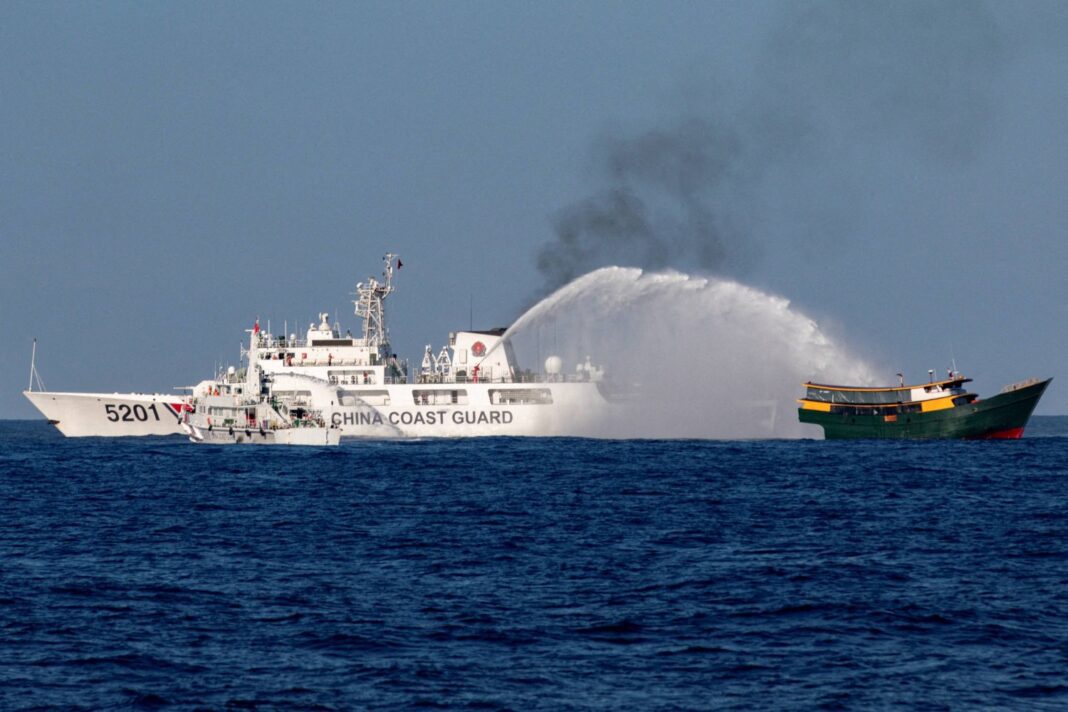On Monday, the Philippines and China accused each other of dangerous manoeuvres and vessel collisions in the South China Sea. This latest incident comes after both nations agreed last month to manage their disputes at sea more carefully. The situation remains tense as both sides present conflicting accounts of what occurred.
China’s Claims of Aggression
China’s Coast Guard released a statement accusing a Philippine vessel of deliberately colliding with a Chinese ship. According to the Chinese authorities, the Philippine vessel ignored repeated warnings and engaged in what they described as “unprofessional and dangerous” behaviour. China asserts that this happened early on Monday in the South China Sea’s contested waters.
Chinese foreign ministry spokesperson Mao Ning reiterated the country’s stance. He stated that China would continue to take “resolute and forceful measures” to protect its territorial sovereignty and maritime rights. She also urged the Philippines to honor the temporary arrangements made between the two countries to avoid such incidents.
Philippines Denies China’s Version of Events
The Philippines disputed China’s account, accusing Beijing of imposing its version of events on the international stage. Jonathan Malaya, a spokesperson for the Philippine national security council and the South China Sea task force, stated that two of their coast guard vessels encountered “unlawful and aggressive maneuvers” from Chinese ships near Sabina Shoal.
According to Malaya, these maneuvers led to collisions that caused structural damage to both Philippine Coast Guard (PCG) vessels involved. The ships, named Cape Engano and Bagacay, were on a mission to supply personnel stationed on Flat Island and Lawak Island. These islands are known as Patag and Nanshan in China.
Structural Damage and Escalating Tensions
The collision reportedly occurred between the Cape Engano and a Chinese vessel at around 3:24 a.m. on Monday. A further Chinese coast guard vessel is said to have twice struck the Bagacay, seriously damaging it, just sixteen minutes later. Philippine officials reported that a 3-foot-wide hole was inflicted in the Bagacay’s auxiliary room. PCG spokesperson Jay Tarriela highlighted that this is the most substantial damage they have suffered due to the aggressive actions of the Chinese Coast Guard.
In response, the Chinese Coast Guard released a short video of the incident, claiming it showed a Philippine ship deliberately ramming one of their vessels. However, Malaya dismissed the video as misleading, stating that it did not accurately reflect the events that took place.
The International Response
The United States condemned China’s actions, expressing support for the Philippines. U.S. Ambassador to Manila, MaryKay Carlson, took to X (formerly Twitter) to voice the U.S. stance. She stated that the U.S. stands with the Philippines in condemning the dangerous actions carried out by the China Coast Guard. She added that these actions endangered lives and caused significant damage to the coast guard vessels.
The Disputed Waters
Sabina Shoal, where the incident occurred, is located in the Spratly Islands. A region with overlapping claims from China, the Philippines, Taiwan, and Vietnam. The Chinese Coast Guard spokesperson, Gan Yu, accused the Philippine vessels of illegally intruding into waters near Sabina Shoal without permission.
China asserts that it warned the Philippines to stop its “infringement and provocation”. And that its coast guard implemented control measures in compliance with the law. Despite the incident, the Philippine task force confirmed that both vessels would continue their mission to supply personnel on Flat Island.
Way Forward
This recent clash in the South China Sea highlights the ongoing tensions between the Philippines and China over territorial disputes. Despite recent agreements to manage disagreements at sea, the situation remains volatile. The international community, including the United States, is closely watching these developments. As any escalation could have significant geopolitical implications.

